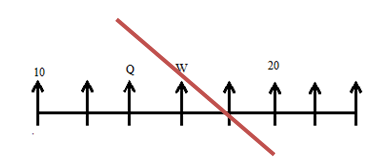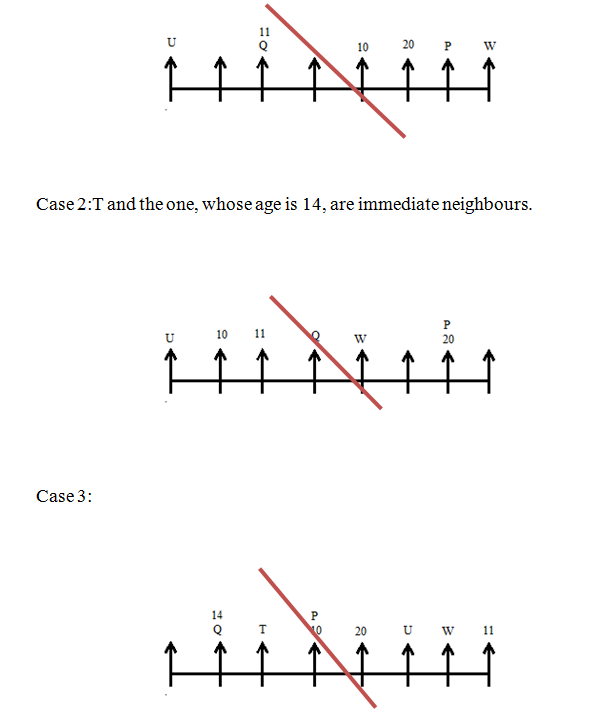Dear Readers, Bank Exam Race for the Year 2018 is already started, To enrich your preparation here we have providing new series of Practice Questions on Reasoning Ability – Seating Arrangement.Candidates those who are preparing for SBI Clerk and IDBI Executive 2018 Exams can practice these questions daily and make your preparation effective.
Click “Start Quiz” to attend these Questions and view Solutions
Directions (1-5) Read the given information carefully and answer the following questions.
Eight friends A, B, C, D, E, F, G and H were sitting around a circular table at equidistant. No two successive friends sit together according to the alphabetical order. All of them like different countries such as IND, AUS, SA, SL, NZ, ENG, PAK and WI but not necessarily in the same order. Four friends were facing towards the centre while the other four members were facing outside the centre.
H sits second to the left of the one who likes SL. A does not like SL. The one who like WI sits third to the right of the one who likes AUS. F faces the centre. Only one person sits between E and the one who likes IND. The immediate neighbours of F face the opposite direction. There were two person sits between B and the one who likes SL. The one who likes NZ sits third to the left of C. G sits opposite to the one who likes PAK. B and H do not like NZ. The one who likes SA sits to the immediate left of G. The immediate neighbour of the one, who likes ENG, faces the same direction. D does not like AUS. A sits opposite to the one who likes NZ. The one who likes SA faces outside the centre. The one who likes ENG sits opposite to H. D sits second to the left of the one who likes PAK.
Q1. E likes which of the following country?
- WI
- AUS
- PAK
- SA
- NZ
Q2. What is the position of A with respect to the one who likes SL?
- Second to the left
- Second to the right
- Immediate left
- Third to the left
- Immediate right
Q3. Four of the following were in a certain group, which of the following that does not belong to that group?
- E
- C
- A
- H
- B
Q4. If G is related to WI and F is related to AUS then in the same way D is related to?
- IND
- ENG
- SA
- PAK
- NZ
Q5. How many persons are there between B and the one who likes AUS when counted from clockwise direction?
- One
- Two
- Three
- Four
- None
Directions (6-10) Read the given information carefully and answer the following questions.
There were eight friends P, Q, R, S, T, U, V and W sitting in a straight line facing north. No two successive friends sit together according to the alphabetical order. All of them were of different ages 10, 11, 12, 13, 14, 17, 18 and 20 but not necessarily in the same order.
There were three person sit between P and the one whose age is 11. Only one person sits between Q and the one whose age is 10. W sits third to the right of the one whose age is 10. Q sits third to the left of the one whose age is 20. U sits second to the left of the one whose age is 11.The number of person sit between V and the one whose age is 10 is same as the number of person lives between U and the one whose age is 17. T and the one, whose age is 14, are immediate neighbours. W’s age was in multiple of three. The one whose age is 20 and Q does not sit at any of the ends. T’s age was in odd number whereas U’s age was in prime number. R sits second to the left of the one whose age is 18.
Q6. Which of the following combination is true?
- P – 20
- Q – 12
- R -13
- U – 11
- T – 17
Q7. Which of the following order is true?
- R>W>Q>T
- U>V>S>T
- T>W>Q>P
- W>Q>U>V
- P<Q<R<T
Q8. Who among the following sit at the end?
- P
- Q
- R
- S
- T
Q9. If R is 11 and T is related to 13 then Q is related?
- 12
- 14
- 17
- 18
- 20
Q5. What is the position of W with respect to the one whose age is 10?
- Third to the left
- Third to the right
- Immediate right
- Immediate left
- Second to the left
Answers:
Directions (1-5)

There were two person sits between B and the one who likes SL. A does not like SL.H sits second to the left of the one who likes SL. The one who likes ENG sits opposite to H. The one who likes NZ sits third to the left of C. B and H do not like NZ. A sits opposite to the one who likes NZ. G sits opposite to the one who likes PAK.D sits second to the left of the one who likes PAK. The one who likes SA sits to the immediate left of G.The one who likes SA faces outside the centre.
Case 1: No two successive friends sit together according to the alphabetical order.

Case 1(a):No two successive friends sit together according to the alphabetical order.

Case 2:

Case 3: No two successive friends sit together according to the alphabetical order.

Case 3(a): No two successive friends sit together according to the alphabetical order.

Case 4:

Only one person sits between E and the one who likes IND. The one who like WI sits third to the right of the one who likes AUS. F faces the centre. The immediate neighbours of F face the opposite direction.The immediate neighbour of the one, who likes ENG, faces the same direction. D does not like AUS.
Case 2: 5 friends are facing outside the centre.

- Answer: (b)
- Answer: (e)
- Answer: (a)
- Answer: (d)
- Answer: (c)
Directions (6-10)

Q sits third to the left of the one whose age is 20.The one whose age is 20 and Q does not sit at any of the ends.Only one person sits between Q and the one whose age is 10. W sits third to the right of the one whose age is 10. There were three person sit between P and the one whose age is 11.U sits second to the left of the one whose age is 11.W’s age was in multiple of three.T’s age was in odd number whereas U’s age was in prime number.T and the one, whose age is 14, are immediate neighbours.
Case 1:There were three person sit between P and the one whose age is 11.

Case 1(a):T and the one, whose age is 14, are immediate neighbours.

R sits second to the left of the one whose age is 18. The number of person sit between V and the one whose age is 10 is same as the number of person lives between U and the one whose age is 17.
Case 3:

6. Answer: (e)
7. Answer: (d)
8. Answer: (d)
9. Answer: (e)
10. Answer: (b)
Daily Practice Test Schedule | Good Luck
| Topic | Daily Publishing Time |
| Daily News Papers & Editorials | 8.00 AM |
| Current Affairs Quiz | 9.00 AM |
| Logical Reasoning | 10.00 AM |
| Quantitative Aptitude “20-20” | 11.00 AM |
| Vocabulary (Based on The Hindu) | 12.00 PM |
| Static GK Quiz | 1.00 PM |
| English Language “20-20” | 2.00 PM |
| Banking Awareness Quiz | 3.00 PM |
| Reasoning Puzzles & Seating | 4.00 PM |
| Daily Current Affairs Updates | 5.00 PM |
| Data Interpretation / Application Sums (Topic Wise) | 6.00 PM |
| Reasoning Ability “20-20” | 7.00 PM |
| English Language (New Pattern Questions) | 8.00 PM |
| General / Financial Awareness Quiz | 9.00 PM |
Click Here for More Practice Puzzles and Seating Arrangement Questions





